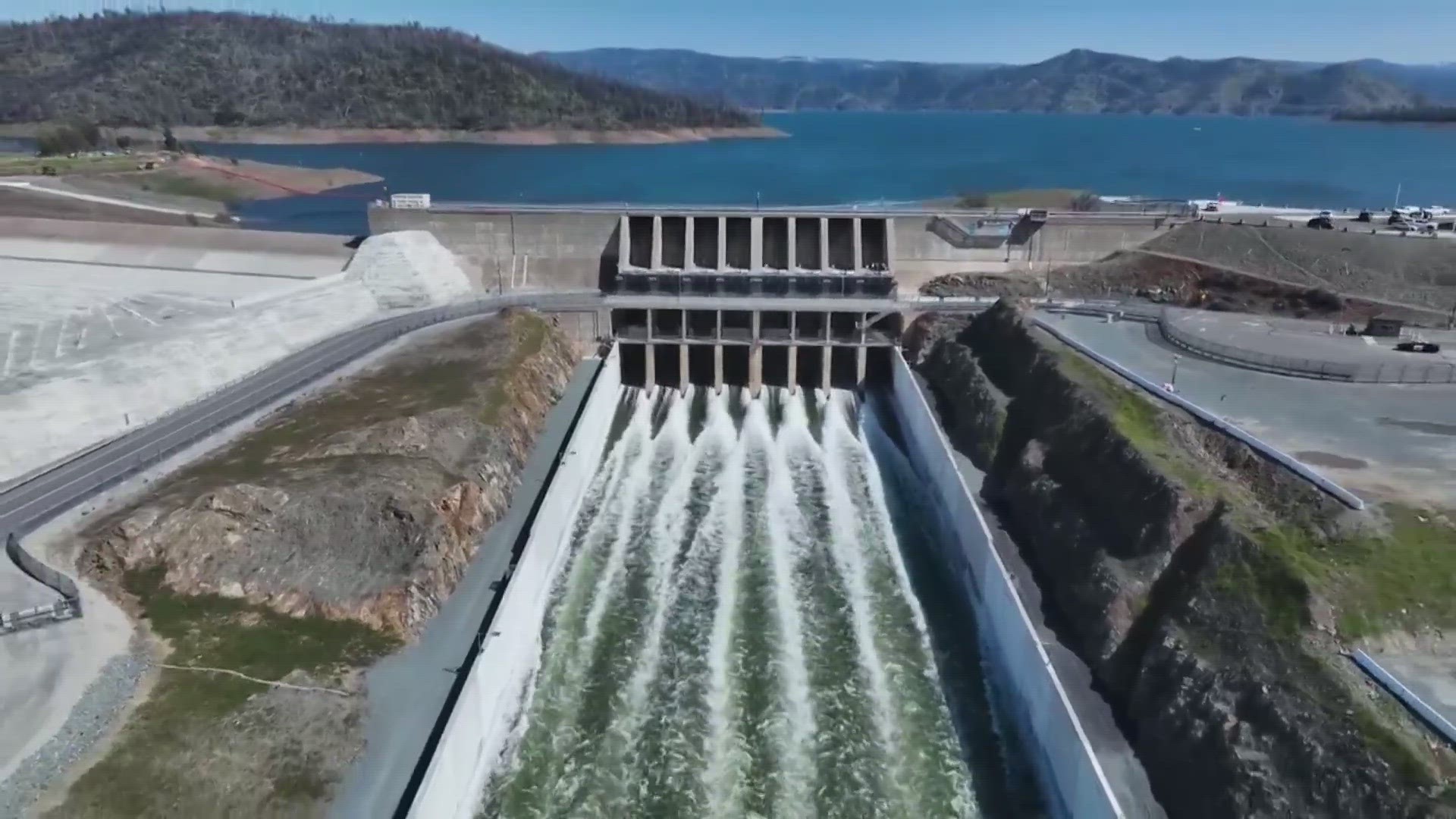SACRAMENTO, Calif. — California's rapidly shifting cycle from dry to wet is pushing water managers to come up with creative ways to move and use water.
With flooding co-existing with areas of drought, the California Department of Water Resources is finding ways to use the flood water and move it to beneficial areas, like recently fallowed or open and working lands or even historically depleted groundwater basins.
The Fresno Irrigation District (FID) is one of those agencies working with DWR to divert high river flows away from flood-prone Central Valley communities, like the Tulare Lake Basin, and move it into groundwater recharge basins.
Adam Claes, assistant general manager of the FID, says they are pumping excess water off the Kings River and nearby canals then moving it into existing storm water basins just west of the city. Since these are primarily used during the winter wet season, there is space to hold this extra water.
Claes says the plan is to allow this water to percolate and recharge the aquifer, a storage area beneath the ground that has the capacity to store nearly 20 times more water than above ground storage.
Over the last century, this underground storage has been overused with little regulation. For many water managers, this is quickly becoming the focus of how we can secure our water future in the state. It's also part of the Newsom Administration’s Water Supply Strategy: Adapting to a Hotter, Drier Future.
Since the groundwater table is about 100 feet below the surface, it will take several months for the water in the percolation areas to reach the underground aquifer. It will likely be available for many surrounding communities, including agriculture areas, to use this winter.
DWR is providing the funding for this project as well as securing equipment needed to siphon off the flood water.
There are currently 15 temporary pumps in the planning and deployment phase in and around the Central Valley. The state is hoping to capture upwards of 55,000 acre feet of spring runoff, alleviating flood impacts to communities and bolstering the amount of water stored underground.
WATCH ALSO:

















